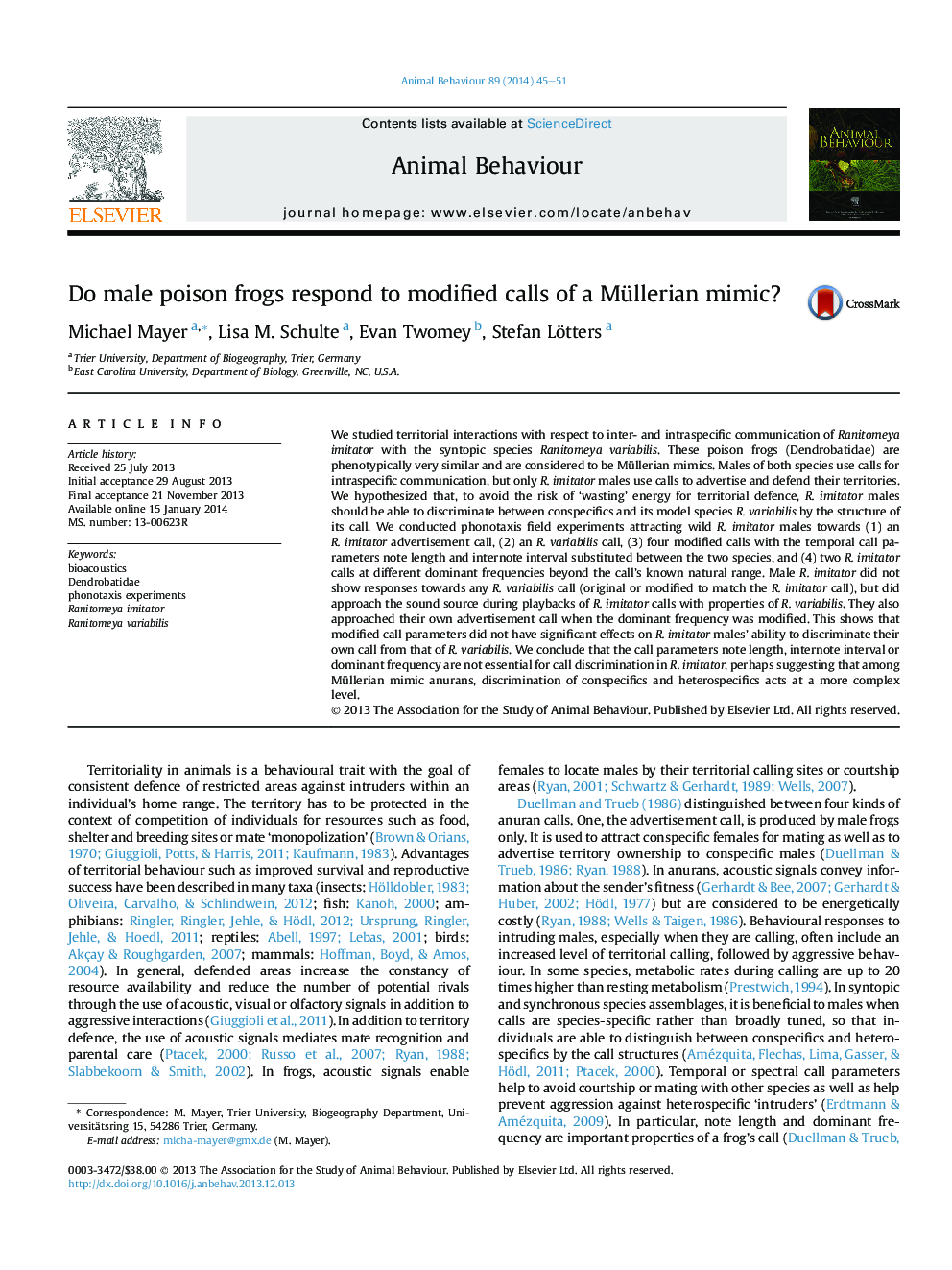| کد مقاله | کد نشریه | سال انتشار | مقاله انگلیسی | نسخه تمام متن |
|---|---|---|---|---|
| 2416448 | 1552239 | 2014 | 7 صفحه PDF | دانلود رایگان |
• We studied inter- and intraspecific communication in two mimic poison frog species.
• We performed phonotaxis field experiments with male Ranitomeya imitator.
• R. imitator was able to discriminate its own call from that of its model species.
• Frogs approached calls modified in attributes matching the model call.
• Frogs also approached calls modified in dominant frequency beyond the known range.
We studied territorial interactions with respect to inter- and intraspecific communication of Ranitomeya imitator with the syntopic species Ranitomeya variabilis. These poison frogs (Dendrobatidae) are phenotypically very similar and are considered to be Müllerian mimics. Males of both species use calls for intraspecific communication, but only R. imitator males use calls to advertise and defend their territories. We hypothesized that, to avoid the risk of ‘wasting’ energy for territorial defence, R. imitator males should be able to discriminate between conspecifics and its model species R. variabilis by the structure of its call. We conducted phonotaxis field experiments attracting wild R. imitator males towards (1) an R. imitator advertisement call, (2) an R. variabilis call, (3) four modified calls with the temporal call parameters note length and internote interval substituted between the two species, and (4) two R. imitator calls at different dominant frequencies beyond the call's known natural range. Male R. imitator did not show responses towards any R. variabilis call (original or modified to match the R. imitator call), but did approach the sound source during playbacks of R. imitator calls with properties of R. variabilis. They also approached their own advertisement call when the dominant frequency was modified. This shows that modified call parameters did not have significant effects on R. imitator males' ability to discriminate their own call from that of R. variabilis. We conclude that the call parameters note length, internote interval or dominant frequency are not essential for call discrimination in R. imitator, perhaps suggesting that among Müllerian mimic anurans, discrimination of conspecifics and heterospecifics acts at a more complex level.
Journal: Animal Behaviour - Volume 89, March 2014, Pages 45–51
